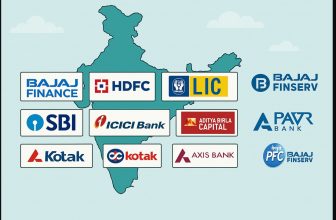Buying your first home is a huge milestone but in India, it’s also a maze of paperwork, financial pressure, and advice from every corner. The excitement can blind you to the risks. And that’s how even smart buyers end up with the wrong home loan.
If you’re about to take your first step, here are 10 common loan mistakes you need to avoid, each backed by what really plays out in Indian housing finance today.
1. Searching for Homes Without Knowing What You Can Borrow
A lot of first-time buyers fall for a house first, then scramble for a loan later only to find out they don’t qualify for enough.
Banks don’t just look at your salary. They check your age, job profile, existing EMIs, and credit score before giving you a number. Even if you earn ₹70,000 per month, you may only get ₹30-40 lakh approved if you have other liabilities or a short service history.
How to avoid this: Use a bank-approved loan eligibility calculator and get a pre-sanction letter based on your actual take-home. It’ll save you from wasting time on properties outside your real budget.
2. Choosing the Builder’s Bank Without Comparing Offers
When a builder tells you “this bank has already approved the project,” it sounds convenient. But that convenience can cost you years of higher interest or hidden charges.
Banks tied up with builders may bundle in extra services like home insurance, charge higher interest, or offer less flexibility on part-payments and foreclosure.
What works better: Compare offers from 2-3 lenders. Look beyond the rate check foreclosure rules, customer service reputation, and whether the loan includes unnecessary extras.
3. Forgetting to Check Your Credit Score First
Your credit history isn’t just for credit cards it directly affects how much home loan you can get, and at what rate. But many buyers never check it before applying.
If your score is below 700, you might still get a loan, but it’ll be costlier. Even a 0.5% difference in interest can add up to ₹4-6 lakh over a 20-year period.
Be proactive: Check your score from CIBIL, Experian, or CRIF. If anything looks wrong an old closed credit card marked as unpaid, for instance raise a dispute before you apply.
4. Picking a 25-Year Loan Just to Lower the EMI
A longer tenure feels safe when money’s tight. But over time, it becomes a financial drain. You end up paying nearly double the principal in interest.
A ₹50 lakh loan at 8.5% over 25 years can cost you over ₹65 lakh in interest alone.
A better approach: Choose a tenure that balances comfort and savings. 15-20 years is usually safer. If your income improves later, prepay in chunks to cut interest without hurting your monthly cash flow.
5. Underestimating the Actual Cost of Owning a Home
A home loan only covers the property. But there are many out-of-pocket expenses that banks won’t finance and many buyers only realise this after draining all their savings for the down payment.
These include stamp duty, registration, interiors, parking charges, legal fees, society deposits, and moving costs.
What you should plan: Add at least 10% to your expected total cost. And always leave a financial cushion for the first few months after possession furnishing a home can hit harder than you expect.
6. Not Understanding What Kind of Interest Rate You’re Signing Up For
Ask most buyers what their rate is, and they’ll say, “8.5%.” Ask whether that’s fixed or floating, and you’ll get silence.
That silence becomes stress when rates rise. If you’re on a floating rate, your EMI can go up mid-loan. If it’s fixed, you may be stuck with a high rate even when others are paying less.
Be clear: Ask the bank to explain whether your rate is floating, fixed, or a hybrid (fixed for 2-3 years, then floating). Also check if there’s a cost for switching between rate types.
7. Trusting Verbal Promises from Bank Agents
Bank representatives often promise easy prepayments, quick processing, or waived charges but if it’s not written down, it means nothing.
Agents may move on, your contact may vanish, and you’ll have no proof when the branch says, “Sorry, that’s not our policy.”
What protects you: Get everything in writing. Ask for a full sanction letter and go through the terms carefully. If they mention insurance or fees you didn’t agree to, don’t hesitate to ask for removal.
8. Not Adding a Co-Applicant When You Could
Buying alone might feel more independent but from a loan point of view, it limits your eligibility and your tax benefits.
If your spouse or parent is earning, adding them can boost your loan amount and let you share the tax breaks.
Think ahead: Make sure the co-applicant is also a co-owner of the property. Both of you can then claim benefits under Section 80C (principal) and Section 24(b) (interest).
9. Being Unaware of How and When the Loan Will Be Disbursed
Buying a ready-to-move flat? The bank pays the builder in one go. But for under-construction property, the money is released in stages and that can cause confusion if you’re not ready.
The builder may ask for a payment before your bank clears the file. Or your EMI may begin even when the house isn’t complete.
Ask early: Understand if disbursal is lump sum or linked to construction stages. Know when EMI starts sometimes it’s just pre-EMI, sometimes full EMI. Plan your cash flow accordingly.
10. Overlooking Prepayment and Foreclosure Clauses
You might assume you can repay early anytime but many loans, especially from NBFCs, have strict rules or penalties.
Some charge 2-4% for early closure, or require a minimum number of EMIs before you’re allowed to prepay.
What to check: If you want repayment freedom, go for a floating-rate loan from an RBI-regulated bank. RBI rules say they cannot charge prepayment or foreclosure penalties on such loans.
Summary: A Home Loan Isn’t Just Paperwork It’s a 20-Year Relationship
A house might be forever, but your loan doesn’t have to be a burden. Avoiding these 10 mistakes won’t just save you money it’ll give you more control, flexibility, and peace of mind throughout your repayment journey.





